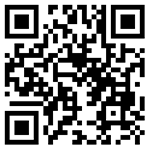莱特兄弟
更新时间:2013-08-13 01:59:18 来源:美国名人
In 1899, after Wilbur Wright had written a letter of request to the Smithsonian Institution for information about flight experiments, the Wright Brothers designed their first aircraft: a small, biplane glider flown as a kite to test their solution for controlling the craft by wing warping. Wing warping is a method of arching the wingtips slightly to control the aircraft"s rolling motion and balance.
Wright Brothers - Birds of a Feather
The Wright Brothers spent a great deal of time observing birds in flight. They noticed that birds soared into the wind and that the air flowing over the curved surface of their wings created lift. Birds change the shape of their wings to turn and maneuver. They believed that they could use this technique to obtain roll control by warping, or changing the shape, of a portion of the wing.
Wright Brothers - Gliders
Over the next three years, Wilbur and his brother Orville would design a series of gliders which would be flown in both unmanned (as kites) and piloted flights. They read about the works of Cayley, and Langley, and the hang-gliding flights of Otto Lilienthal. They corresponded with Octave Chanute concerning some of their ideas. They recognized that control of the flying aircraft would be the most crucial and hardest problem to solve.
Following a successful glider test, the Wrights built and tested a full-size glider. They selected Kitty Hawk, North Carolina as their test site because of its wind, sand, hilly terrain and remote location.
In 1900, the Wrights successfully tested their new 50-pound biplane glider with its 17-foot wingspan and wing-warping mechanism at Kitty Hawk, in both unmanned and piloted flights. In fact, it was the first piloted glider. Based upon the results, the Wright Brothers planned to refine the controls and landing gear, and build a bigger glider.
In 1901, at Kill Devil Hills, North Carolina, the Wright Brothers flew the largest glider ever flown, with a 22-foot wingspan, a weight of nearly 100 pounds and skids for landing. However, many problems occurred: the wings did not have enough lifting power; forward elevator was not effective in controlling the pitch; and the wing-warping mechanism occasionally caused the airplane to spin out of control. In their disappointment, they predicted that man will probably not fly in their lifetime.
In spite of the problems with their last attempts at flight, the Wrights reviewed their test results and determined that the calculations they had used were not reliable. They decided to build a wind tunnel to test a variety of wing shapes and their effect on lift. Based upon these tests, the inventors had a greater understanding of how an airfoil (wing) works and could calculate with greater accuracy how well a particular wing design would fly. They planned to design a new glider with a 32-foot wingspan and a tail to help stabilize it.
Wright Brothers - Inventing the Flyer
During 1902, the brothers flew numerous test glides using their new glider. Their studies showed that a movable tail would help balance the craft and the Wright Brothers connected a movable tail to the wing-warping wires to coordinate turns. With successful glides to verify their wind tunnel tests, the inventors planned to build a powered aircraft.
After months of studying how propellers work the Wright Brothers designed a motor and a new aircraft sturdy enough to accommodate the motor"s weight and vibrations. The craft weighed 700 pounds and came to be known as the Flyer.
Wright Brothers - First Manned Flight
The brothers built a movable track to help launch the Flyer. This downhill track would help the aircraft gain enough airspeed to fly. After two attempts to fly this machine, one of which resulted in a minor crash, Orville Wright took the Flyer for a 12-second, sustained flight on December 17, 1903. This was the first successful, powered, piloted flight in history.
In 1904, the first flight lasting more than five minutes took place on November 9. The Flyer II was flown by Wilbur Wright.
莱特兄弟指的是奥维尔(1871年8月19日—1948年1月30日)和维尔伯(1867年4月16日—1912年5月30日)这两位美国人。世人一般认为他们于1903年12月17日首次完成完全受控制、附机载外部动力、机体比空气重、持续滞空不落地的飞行,并因此将发明了世界上第一架实用飞机的成就归功给他们。
象鸟儿一样在天空飞翔,自古以来就是人类的梦想。为了它的实现,人们付出了多年坚持不懈的努力,甚至许多先驱者生命的代价。终于在1903年12月17日,世界上第一架载人动力飞机在美国北卡罗来纳州的基蒂霍克飞上了蓝天。这架飞机被叫做“飞行者—1号”,它的发明者就是美国的威尔伯·莱特和奥维尔·莱特兄弟。莱特兄弟的第一次有动力的持续飞行,实现了人类渴望已久的梦想,人类的飞行时代从此拉开了帷幕。
威尔伯·莱特生于1867年4月16日,他的弟弟奥维尔·莱特生于1871年8月19日,他们从小就对机械装配和飞行怀有浓厚的兴趣,从事自行车修理和制造行业。莱特兄弟原以修理自行车为生,兄弟俩聪明好学,从1896年开始,他们就一直热心于飞行研究。通过多次研究和实验,他们很快得出一个结论:要解决飞机操纵这个悬而未决的关键问题,必须装上某种能使空气动力学发挥作用的机械装置。他们按照这一想法,在基蒂霍克沙丘上空对载人滑翔机进行了几度寒暑的试验之后,他们的梦想终于变成了现实。
奥托·李林塔尔试飞滑翔机成功的消息使他们立志飞行。1896年李林塔尔试飞失事,促使他们把注意力集中在了飞机的平衡操纵上面。他们特别研究了鸟的飞行,并深入钻研了当时几乎所有关于航空理论方面的书籍。这个时期,航空事业连连受挫,飞行技师皮尔机毁人亡,重机枪发明人马克沁试飞失败,航空学家兰利连飞机带人摔入水中,等等,这使大多数人认为飞机依靠自身动力的飞行完全不可能。
莱特兄弟却没有放弃自己的努力。从1900年至1902年期间,他们除了进行1000多次滑翔试飞之外,还自制了200多个不同的机翼进行了上千次风洞实验,修正了李林塔尔的一些错误的飞行数据,设计出了较大升力的机翼截面形状。滑翔机的留空时间毕竟有限,但假如给飞机加装动力并带上足够的燃料,那么它就可以自由地飞翔、起降。于是,兄弟俩又开始了动力飞机的研制。莱特兄弟废寝忘食地工作着,不久,他们便设计出一种性能优良的发动机和高效率的螺旋桨,然后成功以把各个部件组装成了世界上第一架动力飞机。他们在1903年制造出了第一架依靠自身动力进行载人飞行的飞机“飞行者”1号,这架飞机的翼展为13.2米,升降舵在前,方向舵在后,两副两叶推进螺旋桨由链条传动,着陆装置为滑橇式,装有一台70千克重,功率为8.8千瓦的四缸发动机。这架航空史上著名的飞机,现在陈列在美国华盛顿航空航天博物馆内。
“飞行者”号是一驾普通双翼机,它的两个推进式螺旋桨分别安装在驾驶员位置的两侧,由单台发动机链式传动。1904年,莱特兄弟制造了装配有新型发动机的第二架“飞行者”,在代顿附近的霍夫曼草原进行试飞,最长的持续飞行时间超过了5分钟,飞行距离达4 .4千米;1905年又试验了第三架“飞行者”,由威尔伯驾驶,持续飞行38分钟,飞行38.6千米。第一次试飞的那一天,天气寒冷,刮着大风,首先由弟弟奥维尔·莱特驾驶“飞行者”飞机进行飞行,留空时间12秒钟,飞行36.5米。在同一天内,飞机又进行了3次飞行,其中成绩最好的是哥哥威尔伯·莱特。他驾驶飞机在空中持续飞行260米。
1903年12月14日至17日,“飞行者”1号进行第4次试飞,地点在美国北卡罗来纳州小鹰镇基蒂霍克的一片沙丘上。第一次试飞由奥维尔·莱特驾驶,共飞行了36米,留空12秒。第四次由威尔伯.莱特驾驶,共飞行了260米,留空59秒。1906年,他们的飞机在美国获得专利发明权。
莱特兄弟飞行的成功,最初并没有得到美国政府和公众的重视与承认,直到1907年还为人们所怀疑;反而是法国于1908年首先给他们的成就以正确的评价,从此掀起了席卷世界的航空热潮。他们也因此终于在1909年获得美国国会荣誉奖。同年,他们创办了“莱特飞机公司”。威尔伯.莱特于1912年5月29日逝世,年仅45岁。此后,奥维尔·莱特奋斗30年,使莱特飞机公司成为世界著名飞机制造商,资金高达百亿美元。奥维尔.莱特于1948年1月3日逝世。
上一篇:Eleanor Roosevelt
下一篇:艾伯特·爱因斯坦










